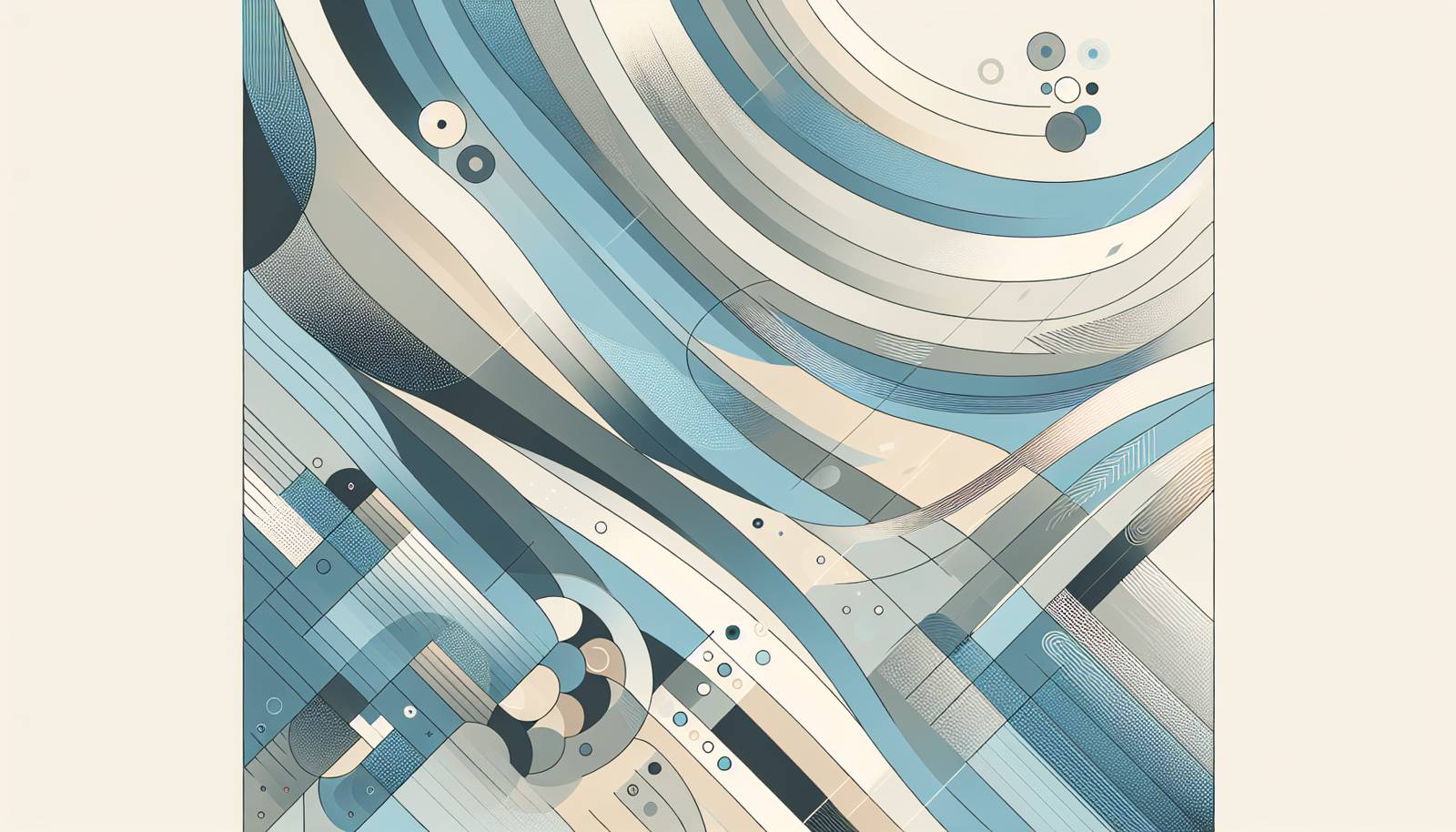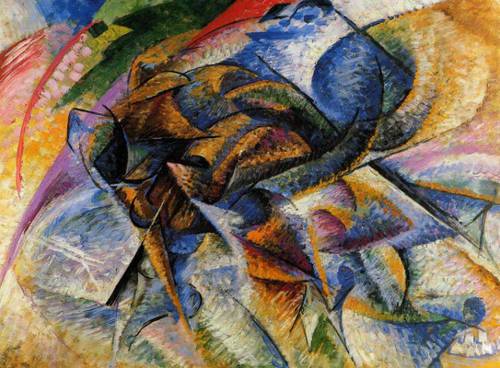
FAQ About The Influence of Futurism on Modern Visual Communication

What is Futurism and how did it originate?
Futurism was an artistic and social movement that originated in Italy in the early 20th century. It was officially launched by Filippo Tommaso Marinetti with the publication of the Futurist Manifesto in 1909. The movement emphasized speed, technology, youth, and violence, glorifying the modern world of machines and industry. Futurists were fascinated with the dynamism and energy of modern technology, which they believed could propel society forward.

How has Futurism influenced modern design?
Futurism has significantly influenced modern design by introducing elements such as dynamic movement, geometric forms, and the use of bold colors to convey a sense of speed and energy. These elements are evident in various domains like graphic design, where there is a focus on asymmetrical compositions and abstract shapes. The influence is also seen in digital media and interface design, where the emphasis on dynamic, user-oriented experience echoes Futurist principles.

In what ways does Futurism inspire contemporary visual communication?
Futurism inspires contemporary visual communication through its advocacy for breaking traditional boundaries and focusing on innovation and experimentation. This influence is visible in the use of kinetic typography, dynamic animations, and interactive media that engage audiences. The movement's enthusiasm for technology encourages designers to incorporate cutting-edge technologies and materials in their projects.

What are some common elements of Futurist art that appear in modern media?
Common elements of Futurist art that appear in modern media include fragmented forms, diagonal lines, and the depiction of motion. Modern media often employs these elements to create a sense of vibrancy and movement. Additionally, the use of mechanized forms and industrial themes, as well as a futuristic aesthetic, permeates areas such as advertising, video games, and animation.

How did Futurism impact the aesthetic of advertising?
Futurism impacted the aesthetic of advertising by emphasizing bold, dynamic designs that capture attention. Advertisers began using unconventional layouts, bright colors, and dynamic imagery to reflect the energy and speed of modern life, akin to Futurist ideals. This approach helped create compelling, forward-thinking advertisements that appeal to the emotions and aspirations of consumers.

What role does technology play in the connection between Futurism and modern visual communication?
Technology plays a critical role in the connection between Futurism and modern visual communication by providing tools that realize the movement's ideals of speed and progress. Digital design software, animation tools, and virtual reality experiences enable designers to create dynamic, interactive works that reflect Futurism's fascination with the technological advancements. This synergy translates into visually compelling and innovative communication methods.

Can Futurism be seen in today's digital user interfaces?
Yes, Futurism can be seen in today's digital user interfaces through the use of sleek, streamlined designs, and dynamic interactions. Elements such as parallax scrolling, animated transitions, and 3D graphics embody the Futurist enthusiasm for movement and technology. These interfaces aim to improve user engagement by making digital interactions more intuitive and visually stimulating.

How does the Futurist concept of speed manifest in contemporary design?
The Futurist concept of speed manifests in contemporary design through rapid visual transitions, streamlined graphics, and dynamic content that engage the audience quickly. Design elements such as bold typography, intuitive navigation, and animation effects are employed to keep pace with users' fast consumption of information, reflecting the Futurist admiration for speed and efficiency.

What is the connection between Futurism and modern kinetic typography?
The connection between Futurism and modern kinetic typography lies in the shared focus on movement and energy. Kinetic typography involves animating text to convey emotion and narrative, echoing Futurism's desire to depict movement and speed. This approach is widely used in advertising, film, and digital media to create engaging and dynamic content.

Did Futurism influence big tech company branding strategies?
Yes, Futurism has influenced big tech company branding strategies by promoting ideas of innovation, modernity, and efficiency, which are core values in the tech industry. Companies often adopt minimalist and futuristic aesthetics in their branding to convey a forward-thinking image and highlight their commitment to pushing technological boundaries.

How does the Futurist emphasis on technology influence today's new media?
The Futurist emphasis on technology influences today's new media by championing the integration of the latest digital tools and trends to deliver content. From augmented reality apps to interactive videos, new media platforms leverage technology to create engaging, immersive experiences, mirroring the Futurist excitement for technological progress.

Are there any modern artists inspired by Futurist principles?
Yes, many modern artists are inspired by Futurist principles, often experimenting with new media and technologies to create dynamic works. These artists explore themes such as speed, movement, and industrialization in their pieces, employing digital art, installations, and immersive experiences that challenge traditional artistic boundaries, much like the Futurists sought to do.

What misconceptions exist about the influence of Futurism on modern design?
A common misconception is that Futurism only focused on chaotic and overly aggressive designs. While Futurists did embrace radical expression, their influence on modern design is more nuanced, contributing to balanced compositions that effectively communicate the dynamism and energy of the modern world. Additionally, people might overlook how Futurism embraced technological progress, which is a staple in today's design trends.

How does Futurism relate to sustainability in design today?
Futurism's relationship with sustainability in design today centers around the use of innovative technologies and materials that promote efficiency and care for the environment. While the original Futurists might not have prioritized sustainability, modern adaptations of their principles often consider eco-friendly practices in building dynamic and forward-thinking designs.

What are some examples of Futurist influence in modern architecture?
Examples of Futurist influence in modern architecture include the use of sleek lines, unconventional forms, and dynamic structures that evoke motion and progress. Architecture firms might employ advanced materials and technologies like smart facades and adaptive designs to create buildings that reflect Futurist ideals of modernity and innovation.

How can designers balance Futurist aesthetics with user-friendly interfaces?
Designers can balance Futurist aesthetics with user-friendly interfaces by integrating visually mesmerizing elements that do not compromise functionality. This involves using streamlined and intuitive navigation structures, ensuring fast loading times, and employing animation that enhances user experience without overwhelming the user. This approach maintains the visual excitement of Futurism while prioritizing usability.

What role does Futurism play in fashion design today?
Futurism plays a significant role in fashion design by inspiring designers to experiment with new materials, technologies, and forms. This includes the use of LED lighting, 3D printing, and high-tech fabrics to create garments that embody movement and dynamism. Futurist fashion often pushes the boundaries of traditional design to create innovative, avant-garde clothing.

How do Futurist concepts appear in film and cinema?
Futurist concepts appear in film and cinema through the use of rapid editing, dynamic visuals, and innovative special effects that capture the energy of motion and technology. Futurism's influence is seen in science fiction films that explore themes of technological advancement and dystopian futures, utilizing visual storytelling to embody the excitement and caution surrounding modern progress.

What is the impact of Futurism on digital marketing strategies?
The impact of Futurism on digital marketing strategies is evident in the emphasis on innovative, technology-driven campaigns that engage audiences through interactive and visually stimulating content. Marketers often incorporate VR experiences, AR filters, and dynamic social media content to capture the fast-paced attention of consumers, embracing the Futurist enthusiasm for technology and speed.

How has the Futurist appreciation for industrial themes influenced modern design choices?
The Futurist appreciation for industrial themes influences modern design choices by encouraging the use of raw materials, metallic finishes, and mechanized aesthetics. This industrial approach is often seen in urban interior design, product design, and technological devices where the raw, unpolished look conveys a sense of modernity and innovation aligned with Futurist ideals.
